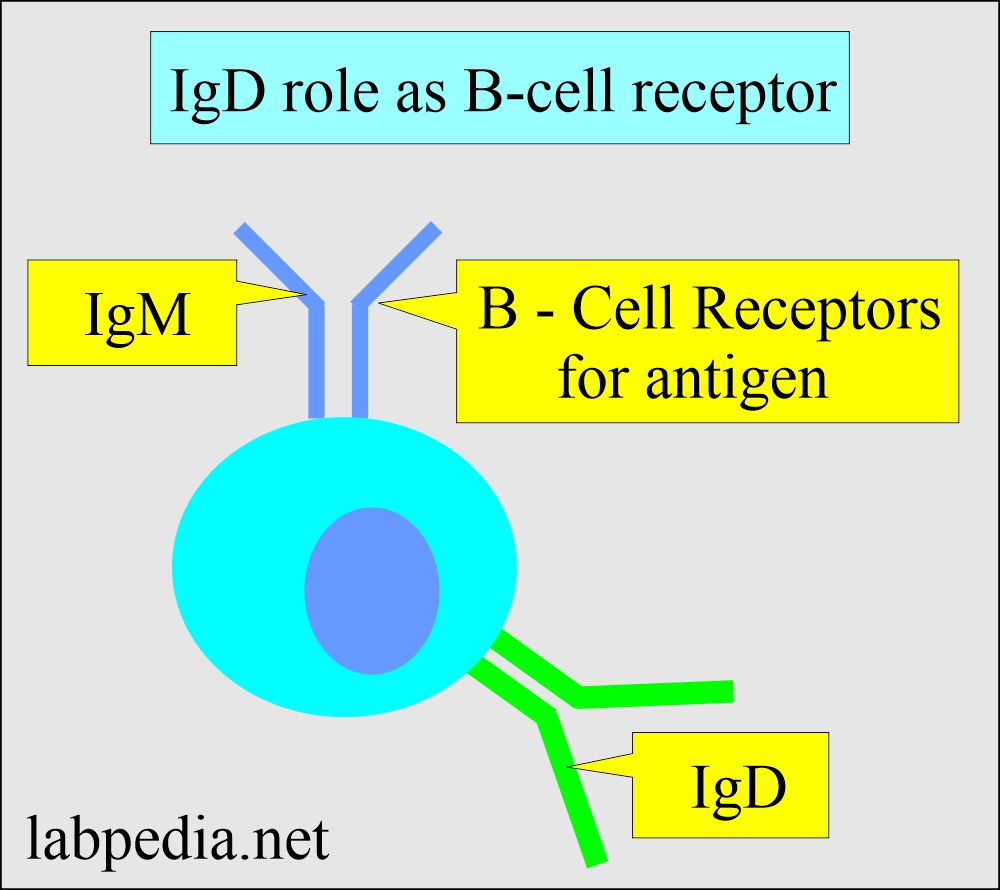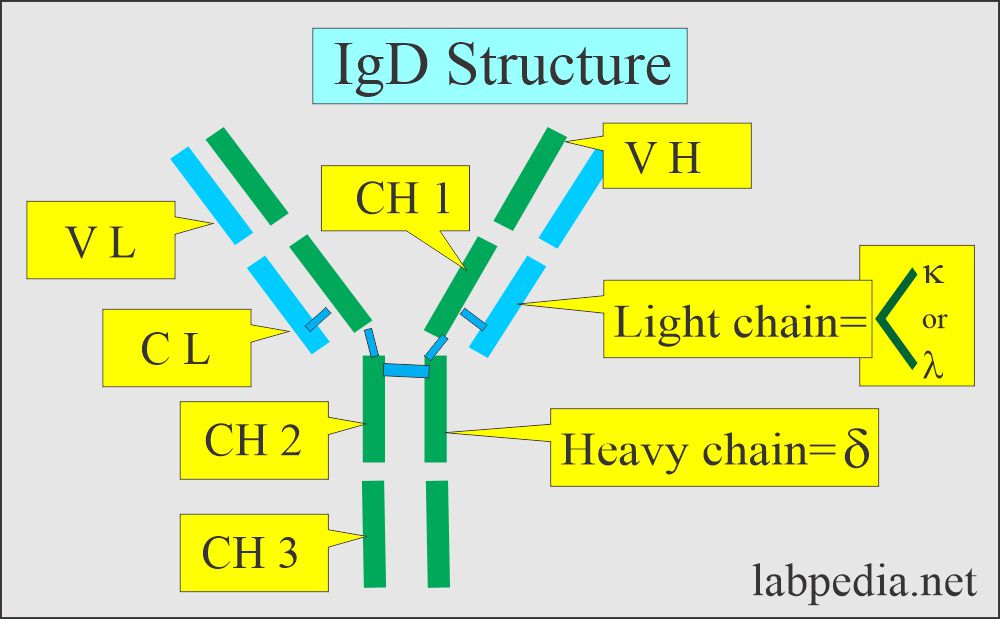Immunoglobulin D (IgD)
Immunoglobulin D (IgD)
What sample is needed for Immunoglobulin D (IgD)?
- The best sample is fresh serum.
- The sample can be stored at 4 °C for less than 72 hours.
- Avoid lipemic or hemolyzed samples.
- Stable for 6 months at -20 °C.
What are the indications for Immunoglobulin D (IgD)?
- It may be advised in IgD myelomas.
How will you discuss the pathophysiology of Immunoglobulin D (IgD)?
- IgD is a monomer with a molecular weight of 180,000 and is 7 S.
- It is 0.2% of the total immunoglobulins and approximately 3 to 5 mg/dl.
- It exists in very low concentrations in the plasma.
- It has two kappas (κ) or lambda (λ) chains.
- Two deltas (δ) heavy chains.
- It is 1% of the plasma membrane of the mature B-lymphocytes.
- IgD is a cell membrane associated with IgM on the surface of B-lymphocytes.
- There are isolated reports that it has activity against insulin, penicillin, milk, diphtheria toxoid, nuclear antigen, and thyroid antigen.
- Its half-life is 2 to 3 days.
- It can not cross the placental barrier.
- IgD can bind to rubella, diphtheria, measles, and Streptococcus.
- This is very sensitive to proteolysis.
- IgD’s main function is unknown but may be involved in differentiating B-lymphocytes.
What are the functions of immunoglobulin D (IgD)?
- IgD, one of its functions, signals the B-lymphocytes.
- Secreted IgD enhances mucosal homeostasis and immune surveillance.
- IgD armed the myeloid effector cells like basophils and mast cells.
What is the normal level of Immunoglobulin D (IgD)?
Source 1
- Cord blood = >2 mg/dL
- >16 years = <15 mg/dL
- Newborn = <1.0 mg/dL
- Adult = <8 mg/dL
- To convert to SI unit x 10 = mg/L
Another source
- 0.3 to 3.0 mg/dl
- Newborn = <1.0 mg/dL
- Adult = <8 mg/dL
What are the causes of raised levels of Immunoglobulin D (IgD)?
- In patients with multiple Myeloma cases (IgD myeloma)
- It may be seen in hyperimmunoglobulinemia IgD syndrome.
- Autoimmune disease.
- Chronic infections.
What are the causes of decreased levels of immunoglobulin D (IgD)?
- Hereditary deficiencies.
- Non-IgD-myeloma.
- Infancy early childhood.
- Acquired immune deficiency (AIDS).
Questions and answers:
Question 1: What is the role of IgD in the immune system.
Question 2: What is the half-life of IgD.


